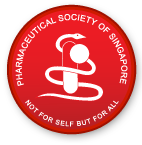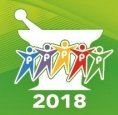However, in 1982 it was renovated and the multidisciplinary hospital now serves the public. There is a total of 580 staff in the hospital and the hospital has an average occupancy of 80%.
The Pharmacy Department has 30 pharmacists. There is 1 Director (Dr Katsuyoshi Uchino), 2 pharmacists are involved in inventory management, 2 pharmacists for manufacturing, 3 pharmacists as clinical research coordinators and the rest, 24 of them are mostly involved in dispensing. The Director emphasized that all the staff multi- tasked daily.

Outpatient Pharmacy
At the outpatient pharmacy, they process about 700 prescriptions daily, although about 1200 patients are seen at their outpatient clinics. The pharmacy dispenses both western medicine (tablets and capsules) as well as traditional medicines (powder form) as unit doses.
The hospital introduced their electronic medical record in March 2005, thus prescriptions are received at the outpatient pharmacy electronically, vetted by pharmacists, followed by packing of medication in unit dose by Tosho machine (Unit dose packing machine) and manual packing of powders (traditional medicine) into unit dose sachets, then final check by pharmacists for completeness before dispensing to patients. Each patient also receives printed information in the form of A4 size, which contains colored picture of the medicines as well as instructions on how to take, indication and side effects. As patients pay for their consults and medication at Registration counter, thus they just have to collect their medicines at the pharmacy. Most patients’ wait no more than 20 minutes for their medicines.
Inpatient Pharmacy
For Inpatient, Pharmacy, the pharmacists manually pack all the vials, required infusion bags and tablets into small individual boxes specific for each patient on daily basis. These name- patient boxes are delivered to the wards by porters.

The infusions are prepared with the necessary additives before sent to the wards. Thus the nurses just need to serve the medicine without requiring any further preparation. At the ward level, the pharmacy has a satellite pharmacy that has laminar flow cabinet to prepare all the infusions or injectables into the final forms, including total parenteral nutrition (TPN). The room containing laminar flow cabinet is not controlled (classless).

Although nurses serve medications to patients, the Director of Pharmacy said that he is evaluating the possibility of having the pharmacists serve the medicine. Basically, he is looking at the total flow from beginning (preparation) to end (administration).
The Pharmacy Lab has many types of equipment that one finds in a manufacturing setting. They basically manufacture their own creams and ointments, products for research purposes etc.
My Thoughts
I am most impressed with Dr Katsuyoshi Uchino, Director of Pharmacy, with his vision of constantly finding ways to improve flow and reduce errors. Although Dr Katsuyoshi Uchino could not speak English, he arranged for his daughter-in-law, Ms Masako to act as the interpreter. They were very warm and most willing to share their experiences. He also shared that he developed a structured timetable for each of his staff working in the inpatient team, (almost like school time table), time for lunch, specific time for ward rounds/conference, distribution work, lunch break, medication reviews, such that the service is provided from 7.30am to 7.30pm with staggered shifts.
They have pharmacists but no technicians. The unit dose systems (Tosho) are used in both Outpatient and Inpatient services. However, for Inpatient, the injectables and infusion are not automated and the pharmacists manually pick and pack into named-patient boxes daily to reduce errors at administration.
Although the building looks very old as the last renovation was done in 1982, the pharmacy has invested in automation machines, 2 huge colour printers and manufacturing equipments in their bid to provide comprehensive, error free pharmaceutical care.
Most of the Pharmacy Directors or Senior Pharmacists in Japan has PhDs and are quite involved in research. Another hospital pharmacy director I spoke to also shared that they do research and develop pharmaceuticals for use within their institutions. I find that instead of manufacturing basic creams and ointment, these could be bought like what we do in Singapore.
Fatimah MK
Vice President, PSS
*****


